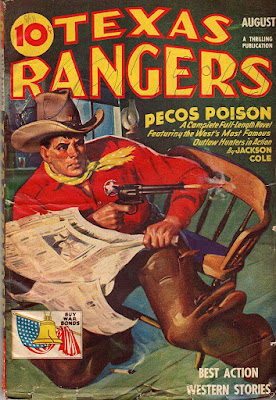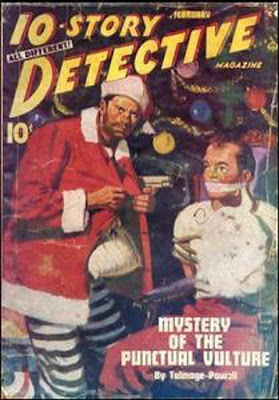This
has been a year with a considerable amount of bad—the loss of friends and loved
ones, ongoing health problems for me and many of those close to me—but also
plenty of good, mostly due to the love of friends and family. We hang in there
and keep going, and there are good times along the way. And a number of things
to report in the areas which this blog addresses most of the time.
WRITING
I reached the million word level again this year for the 14th year in a row. When I started this streak, I just wanted to see if I could actually write a million words in a year. I had come close the year before, somewhere between 800,000 and 900,000, so it seemed at least possible. Then once I accomplished that, and once the years doing it began to pile up, I just kept going. Ten years seemed like a pretty good goal. When I passed that and made it to 13 years, I didn’t want to stop there. (Yes, I’m that superstitious.) So I had to try to make it again this year, and I did, with a little more than a week to spare. (Gone are the days when I’d hit a million words sometime in October!) Next year, who knows, maybe, maybe not, but I’m in the process of cutting back some on my commitments because there are still things I’d like to do besides sit and pound the keyboard. Although I still love writing, don’t get me wrong about that. Most of my work is published under other names, as has been the case for many years, but I was able to do a few short stories as myself that haven’t seen print yet but will next year. I’m still the luckiest guy I know, to be able to do what I really enjoy and make a living at it.
READING
I read 115 books this year, the usual mix of Westerns, mysteries, thrillers, science fiction, horror, graphic novels, and assorted other stuff. Looking back, I read 116 books last year. I was surprised the total was that close. I’m consistent, if nothing else. More than ever, I’ve retreated into the safe havens of pulps, pulp reprints, and vintage paperbacks and hardbacks, the same sort of stuff I’ve been reading and enjoying for nearly 60 years now. Amazingly enough, I hardly ever reread anything. There’s still more good old stuff out there than I’ll ever get around to reading, but I’m going to try. I do still read new books, too, especially those by friends of mine. Below are the ten books I read this year that I liked the best, in the order in which I read them.
THE BLACK ICE SCORE, Richard Stark (Donald E. Westlake)
WRITING
I reached the million word level again this year for the 14th year in a row. When I started this streak, I just wanted to see if I could actually write a million words in a year. I had come close the year before, somewhere between 800,000 and 900,000, so it seemed at least possible. Then once I accomplished that, and once the years doing it began to pile up, I just kept going. Ten years seemed like a pretty good goal. When I passed that and made it to 13 years, I didn’t want to stop there. (Yes, I’m that superstitious.) So I had to try to make it again this year, and I did, with a little more than a week to spare. (Gone are the days when I’d hit a million words sometime in October!) Next year, who knows, maybe, maybe not, but I’m in the process of cutting back some on my commitments because there are still things I’d like to do besides sit and pound the keyboard. Although I still love writing, don’t get me wrong about that. Most of my work is published under other names, as has been the case for many years, but I was able to do a few short stories as myself that haven’t seen print yet but will next year. I’m still the luckiest guy I know, to be able to do what I really enjoy and make a living at it.
READING
I read 115 books this year, the usual mix of Westerns, mysteries, thrillers, science fiction, horror, graphic novels, and assorted other stuff. Looking back, I read 116 books last year. I was surprised the total was that close. I’m consistent, if nothing else. More than ever, I’ve retreated into the safe havens of pulps, pulp reprints, and vintage paperbacks and hardbacks, the same sort of stuff I’ve been reading and enjoying for nearly 60 years now. Amazingly enough, I hardly ever reread anything. There’s still more good old stuff out there than I’ll ever get around to reading, but I’m going to try. I do still read new books, too, especially those by friends of mine. Below are the ten books I read this year that I liked the best, in the order in which I read them.
THE BLACK ICE SCORE, Richard Stark (Donald E. Westlake)
TERROR
INC., Lester Dent
SLEEP
WITH THE DEVIL, Day Keene
THE
PYTHON PIT, George F. Worts
MR.
CALAMITY, Kenneth Robeson (Will Murray)
THE
WIDOW, Orrie Hitt
RENEGADE,
Ramsey Thorne (Lou Cameron)
THE
DOOM LEGION, Will Murray
CASCA:
THE ETERNAL MERCENARY, Barry Sadler
ASTOUNDING:
JOHN W. CAMPBELL, ISAAC ASIMOV, ROBERT A. HEINLEIN, L. RON HUBBARD, AND THE
GOLDEN AGE OF SCIENCE FICTION, Alec Nevala-Lee
You can see what I mean about pulps and vintage paperbacks. There are three new books on that list, the two by Will Murray that feature pulp characters, and the non-fiction volume by Alec Nevala-Lee that’s about a pulp, the man who edited it, and the authors who wrote for it. I believe that all ten books on this list are currently in print. I didn’t check on this, so bear with me if I’m wrong on one or two of them. But you can still find copies pretty easily if you want to check out any of them.
MOVIES
Honestly, it was a struggle to find time to watch many movies this year, which led to me participating only sporadically in the Overlooked Movies/TV posts. More next year, perhaps.
THE STATE OF THE BLOG
I started Rough Edges in the summer of 2004 because my friends Bill Crider and Ed Gorman had blogs, and I wanted to try my hand at one, too. In the early days it was mostly a report of mundane things that I did, but gradually book and movie reviews became more prominent, along with music posts and some posts about my work and writing in general. As mentioned above, in the past year I haven’t written nearly as much about movies, and many weeks there were only Forgotten Books posts and my weekend series about pulps, along with the occasional and semi-autobiographical Monday Memories posts. (I’m already running out of things to write about in those, so expect them to appear less often.)
The really odd thing about this year is that in late October, literally from one day to the next, the daily traffic to the blog dropped by roughly two-thirds. I have no idea why this happened. I realize that with the rise of Facebook and other social media, blogs aren’t nearly as popular as they were a decade ago, but that sudden drop is both baffling and discouraging.
However, just in the past few months, several people have contacted me out of the proverbial blue to tell me how much they enjoy the blog. One fellow said, “I’ve learned a tremendous amount about pulps and genre fiction from reading Rough Edges and enjoyed every minute of it.” As long as I’m accomplishing that, I consider the time very well spent, and if it ever gets to the point where only a dozen people are reading it, as it was in the beginning, well, that’s okay, too, as long as they’re enjoying it. As I’ve said about the WesternPulps mailing list, which has been through E-Groups, One List, Yahoo Groups, and now Groups.io, “I started this group sending messages to myself, and I’ll keep it up until it reaches that point again.” My mother always said I was the most hard-headed person she had ever seen.
So to all of you still with me, thank you for your friendship and interest, and I’ll see you next year. May it be a good one for all of us!
You can see what I mean about pulps and vintage paperbacks. There are three new books on that list, the two by Will Murray that feature pulp characters, and the non-fiction volume by Alec Nevala-Lee that’s about a pulp, the man who edited it, and the authors who wrote for it. I believe that all ten books on this list are currently in print. I didn’t check on this, so bear with me if I’m wrong on one or two of them. But you can still find copies pretty easily if you want to check out any of them.
MOVIES
Honestly, it was a struggle to find time to watch many movies this year, which led to me participating only sporadically in the Overlooked Movies/TV posts. More next year, perhaps.
THE STATE OF THE BLOG
I started Rough Edges in the summer of 2004 because my friends Bill Crider and Ed Gorman had blogs, and I wanted to try my hand at one, too. In the early days it was mostly a report of mundane things that I did, but gradually book and movie reviews became more prominent, along with music posts and some posts about my work and writing in general. As mentioned above, in the past year I haven’t written nearly as much about movies, and many weeks there were only Forgotten Books posts and my weekend series about pulps, along with the occasional and semi-autobiographical Monday Memories posts. (I’m already running out of things to write about in those, so expect them to appear less often.)
The really odd thing about this year is that in late October, literally from one day to the next, the daily traffic to the blog dropped by roughly two-thirds. I have no idea why this happened. I realize that with the rise of Facebook and other social media, blogs aren’t nearly as popular as they were a decade ago, but that sudden drop is both baffling and discouraging.
However, just in the past few months, several people have contacted me out of the proverbial blue to tell me how much they enjoy the blog. One fellow said, “I’ve learned a tremendous amount about pulps and genre fiction from reading Rough Edges and enjoyed every minute of it.” As long as I’m accomplishing that, I consider the time very well spent, and if it ever gets to the point where only a dozen people are reading it, as it was in the beginning, well, that’s okay, too, as long as they’re enjoying it. As I’ve said about the WesternPulps mailing list, which has been through E-Groups, One List, Yahoo Groups, and now Groups.io, “I started this group sending messages to myself, and I’ll keep it up until it reaches that point again.” My mother always said I was the most hard-headed person she had ever seen.
So to all of you still with me, thank you for your friendship and interest, and I’ll see you next year. May it be a good one for all of us!


































